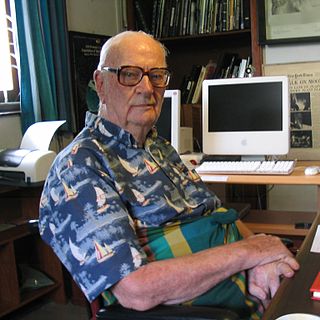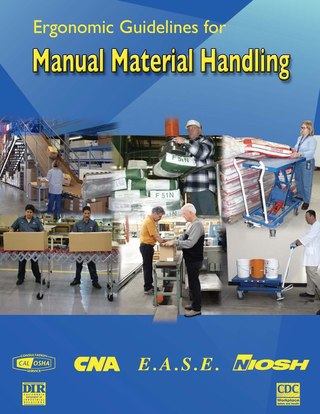Fatigue is a subjective feeling of tiredness or exhaustion or loss of energy in humans.
Contents
Fatigue may also refer to:
Fatigue is a subjective feeling of tiredness or exhaustion or loss of energy in humans.
Fatigue may also refer to:
Battle fatigue is may refer to:

Fatigue describes a state of tiredness, exhaustion or loss of energy.
The field of strength of materials typically refers to various methods of calculating the stresses and strains in structural members, such as beams, columns, and shafts. The methods employed to predict the response of a structure under loading and its susceptibility to various failure modes takes into account the properties of the materials such as its yield strength, ultimate strength, Young's modulus, and Poisson's ratio. In addition, the mechanical element's macroscopic properties such as its length, width, thickness, boundary constraints and abrupt changes in geometry such as holes are considered.
Fatigues may refer to:

Post-polio syndrome is a group of latent symptoms of poliomyelitis (polio), occurring at about a 25–40% rate. They are caused by the damaging effects of the viral infection on the nervous system and typically occur 15 to 30 years after an initial acute paralytic attack. Symptoms include decreasing muscular function or acute weakness with pain and fatigue. The same may also occur years after a nonparalytic polio infection.
Weakness is a symptom of many different medical conditions. The causes are many and can be divided into conditions that have true or perceived muscle weakness. True muscle weakness is a primary symptom of a variety of skeletal muscle diseases, including muscular dystrophy and inflammatory myopathy. It occurs in neuromuscular junction disorders, such as myasthenia gravis.
Muscle fatigue is when muscles that were initially generating a normal amount of force, then experience a declining ability to generate force. It can be a result of vigorous exercise, but abnormal fatigue may be caused by barriers to or interference with the different stages of muscle contraction. There are two main causes of muscle fatigue: the limitations of a nerve’s ability to generate a sustained signal ; and the reduced ability of the muscle fiber to contract.

Combat stress reaction (CSR) is acute behavioral disorganization as a direct result of the trauma of war. Also known as "combat fatigue", "battle fatigue", or "battle neurosis", it has some overlap with the diagnosis of acute stress reaction used in civilian psychiatry. It is historically linked to shell shock and can sometimes precurse post-traumatic stress disorder.
Shift work is an employment practice designed to keep a service or production line operational at all times. The practice typically sees the day divided into shifts, set periods of time during which different groups of workers perform their duties. The term "shift work" includes both long-term night shifts and work schedules in which employees change or rotate shifts.
Muscle weakness is a lack of muscle strength. Its causes are many and can be divided into conditions that have either true or perceived muscle weakness. True muscle weakness is a primary symptom of a variety of skeletal muscle diseases, including muscular dystrophy and inflammatory myopathy. It occurs in neuromuscular junction disorders, such as myasthenia gravis. Muscle weakness can also be caused by low levels of potassium and other electrolytes within muscle cells. It can be temporary or long-lasting. The term myasthenia is from my- from Greek μυο meaning "muscle" + -asthenia ἀσθένεια meaning "weakness".
Compassion fatigue is an evolving concept in the field of traumatology. The term has been used interchangeably with secondary traumatic stress (STS), which is sometimes simply described as the negative cost of caring. Secondary traumatic stress is the term commonly employed in academic literature, although recent assessments have identified certain distinctions between compassion fatigue and secondary traumatic stress (STS).

Musculoskeletal disorders (MSDs) are injuries or pain in the human musculoskeletal system, including the joints, ligaments, muscles, nerves, tendons, and structures that support limbs, neck and back. MSDs can arise from a sudden exertion, or they can arise from making the same motions repeatedly, or from repeated exposure to force, vibration, or awkward posture. Injuries and pain in the musculoskeletal system caused by acute traumatic events like a car accident or fall are not considered musculoskeletal disorders. MSDs can affect many different parts of the body including upper and lower back, neck, shoulders and extremities. Examples of MSDs include carpal tunnel syndrome, epicondylitis, tendinitis, back pain, tension neck syndrome, and hand-arm vibration syndrome.
The complications of prolonged standing are conditions that may arise after standing, walking, or running for prolonged periods. Many of the complications come from prolonged standing that is repeated several times a week. Many jobs require prolonged standing, such as "retail staff, baristas, bartenders, assembly line workers, security staff, engineers, catering staff, library assistants, hair stylists and laboratory technicians". The basic physiological change that occurs in the body during prolonged standing or sudden stand from supine position is that there will be increased pooling of blood in the legs. This decreases the venous return, and so there will be decreased cardiac output, which ultimately causes systolic blood pressure to fall (hypotension). This hypotension may lead the subject to faint or to have other symptoms of hypotension. Standing requires about 10% more energy than sitting.

A GABA reuptake inhibitor (GRI) is a type of drug which acts as a reuptake inhibitor for the neurotransmitter gamma-Aminobutyric acid (GABA) by blocking the action of the gamma-Aminobutyric acid transporters (GATs). This in turn leads to increased extracellular concentrations of GABA and therefore an increase in GABAergic neurotransmission. Gamma-aminobutyric acid (GABA) is an amino acid that functions as the predominant inhibitory neurotransmitter within the central nervous system, playing a crucial role in modulating neuronal activity in both the brain and spinal cord. While GABA predominantly exerts inhibitory actions in the adult brain, it has an excitatory role during developmental stages. When the neuron receives the action potential, GABA is released from the pre-synaptic cell to the synaptic cleft. After the action potential transmission, GABA is detected on the dendritic side, where specific receptors collectively contribute to the inhibitory outcome by facilitating GABA transmitter uptake. Facilitated by specific enzymes, GABA binds to post-synaptic receptors, with GABAergic neurons playing a key role in system regulation. The inhibitory effects of GABA diminish when presynaptic neurons reabsorb it from the synaptic cleft for recycling by GABA transporters (GATs). The reuptake mechanism is crucial for maintaining neurotransmitter levels and synaptic functioning. Gamma-aminobutyric acid Reuptake Inhibitors (GRIs) hinder the functioning of GATs, preventing GABA reabsorption in the pre-synaptic cell. This results in increased GABA levels in the extracellular environment, leading to elevated GABA-mediated synaptic activity in the brain.
Myalgic encephalomyelitis/chronic fatigue syndrome (ME/CFS) is a serious long-term illness. People with ME/CFS experience a profound fatigue that does not go away with rest, sleep issues and problems with memory or concentration. They are able to do much less than before they became ill. Further common symptoms include dizziness, nausea and pain. The hallmark symptom is a worsening of the illness hours to days after minor physical or mental activity. This "crash" can last less than a day to several months.

Stress in the aviation industry is a common phenomenon composed of three sources: physiological stressors, psychological stressors, and environmental stressors. Professional pilots can experience stress in flight, on the ground during work-related activities, and during personal time because of the influence of their occupation. An airline pilot can be an extremely stressful job due to the workload, responsibilities and safety of the thousands of passengers they transport around the world. Chronic levels of stress can negatively impact one's health, job performance and cognitive functioning. Being exposed to stress does not always negatively influence humans because it can motivate people to improve and help them adapt to a new environment. Unfortunate accidents start to occur when a pilot is under excessive stress, as it dramatically affects his or her physical, emotional, and mental conditions. Stress "jeopardizes decision-making relevance and cognitive functioning" and it is a prominent cause of pilot error. Being a pilot is considered a unique job that requires managing high workloads and good psychological and physical health. Unlike the other professional jobs, pilots are considered to be highly affected by stress levels. One study states that 70% of surgeons agreed that stress and fatigue don't impact their performance level, while only 26% of pilots denied that stress influences their performance. Pilots themselves realize how powerful stress can be, and yet many accidents and incidents continues to occur and have occurred, such as Asiana Airlines Flight 214, American Airlines Flight 1420, and Polish Air Force Tu-154.

Ergonomic hazards are physical conditions that may pose a risk of injury to the musculoskeletal system due to poor ergonomics. These hazards include awkward or static postures, high forces, repetitive motion, or short intervals between activities. The risk of injury is often magnified when multiple factors are present.

Sleep is a naturally recurring state of mind and body, characterized by altered consciousness, relatively inhibited sensory activity, reduced muscle activity, and inhibition of nearly all voluntary muscles during rapid eye movement (REM) sleep, and reduced interactions with surroundings. An essential aspect of sleep is that it provides the human body with a period of reduced functioning that allows for the systems throughout the body to be repaired. This time allows for the body to recharge and return to a phase of optimal functioning. It is recommended that adults get 7 to 9 hours of sleep each night. Sleep is regulated by an internal process known as the circadian rhythm. This 24-hour cycle regulates periods of alertness and tiredness that an individual experiences. The correlation between psychological stress and sleep is complex and not fully understood. In fact, many studies have found a bidirectional relationship between stress and sleep. This means that sleep quality can affect stress levels, and stress levels can affect sleep quality. Sleep change depends on the type of stressor, sleep perception, related psychiatric conditions, environmental factors, and physiological limits.
Rehabilitation after COVID-19 is needed in individuals experiencing longer-term disabling illness at any stage of COVID-19 infection. The rehabilitation of individuals with COVID-19 includes screening for the need for rehabilitation, participation of a multi-disciplinary team to evaluate and manage the individual's disabilities, use of four evidence based classes for rehabilitation, as well as individualised interventions for other problems.
Being exposed to traumatic events such as war, violence, disasters, loss, injury or illness can cause trauma. Additionally, the most common diagnostic instruments such as the ICD-11 and the DSM-5 expand on this definition of trauma to include perceived threat to death, injury, or sexual violence to self or a loved one. Even after the situation has passed, the experience can bring up a sense of vulnerability, hopelessness, anger and fear.